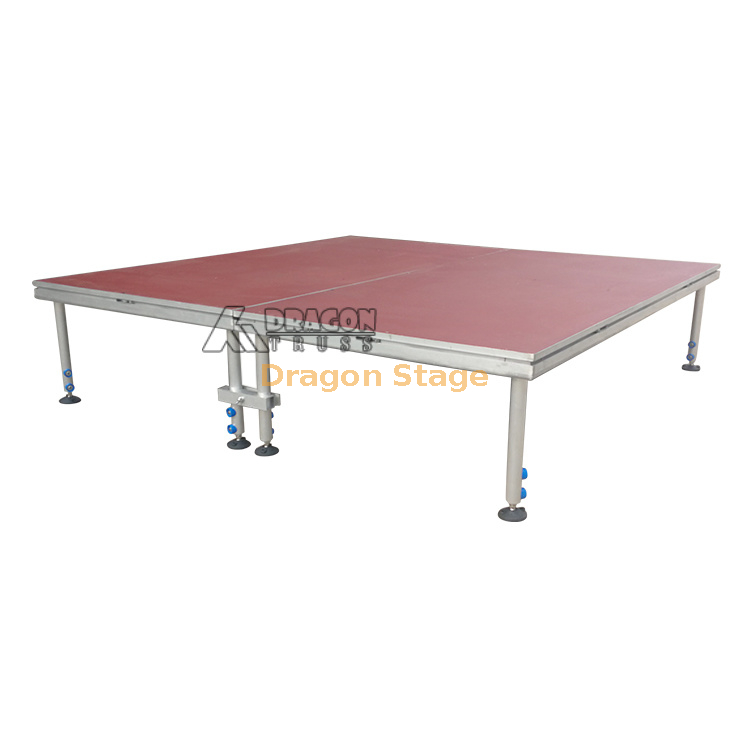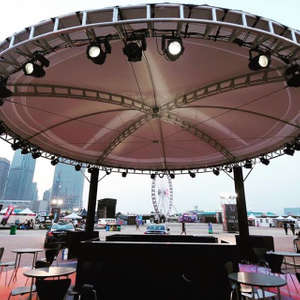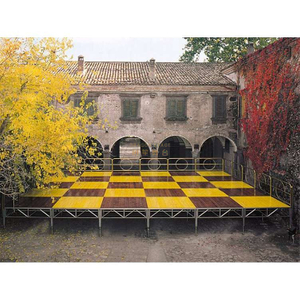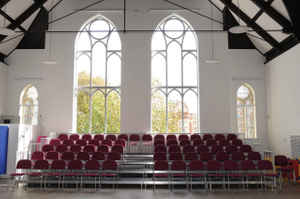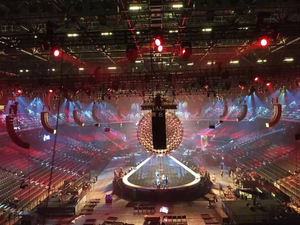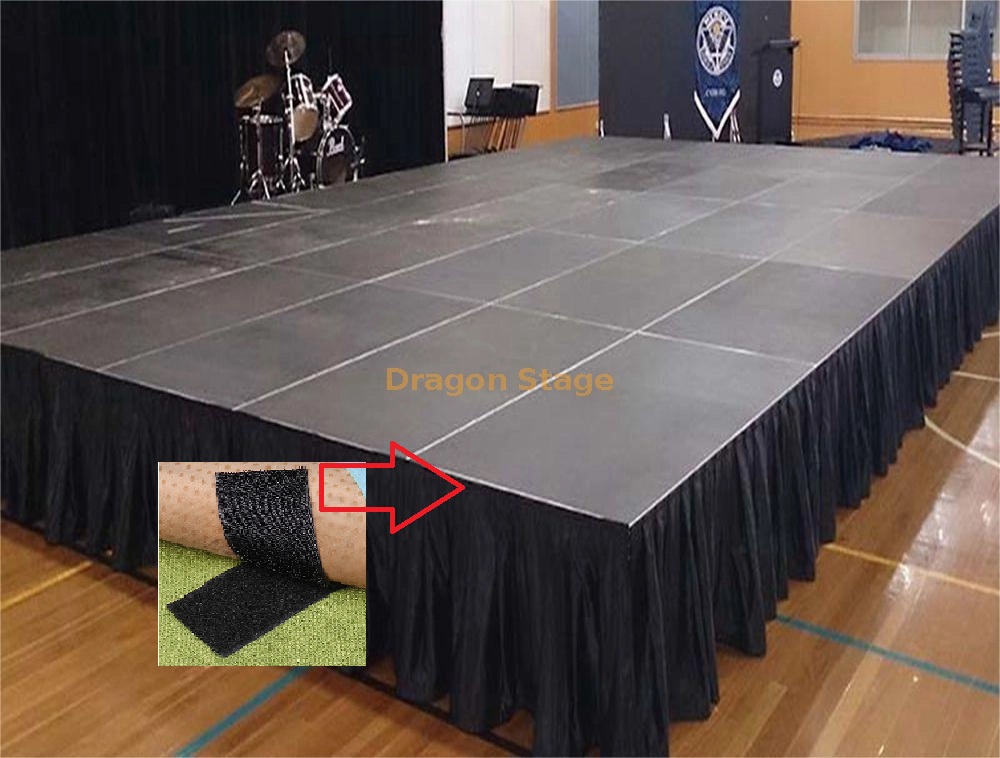The stage is the focal point of each church service. A stage is a necessity, whether it be in a small church or a large stage. A grand, spectacular stage commands the audience's attention as soon as they walk into the church.
You can still have a magnificent church service, even if it takes place on a small stage. The following details will help you figure out how to build a church stage.
How To Build A Church stage
Determine Your Budget
Budget is a roadmap to help make planning your expenses easier while building a stage for your church. After determining the budget, you can go for the next step.
Choose Between Permanent and Portable stage
Stages provide a designated area for drama productions, special music concerts, or regular church meetings, and they can be permanent or temporary.
Stages that will be used occasionally for special presentations or dramas should be portable and small. You can build the stage from two or three sections. A permanent stage requires additional work, however. Your main floor project should seamlessly integrate with the rest of your main floor. It is more convenient and should match your needs to have a portable stage. You can customize the stage area to meet your needs. Portable stages are affordable and easy to construct.
Measure Area
After selecting whether you want a permanent portable stage, measure the area the stage will occupy. Be sure to accommodate doors and structures which are already in place in the same area. Measure the area you will be using for the stage. The church's layout and the stage's size may require you to work around additional structures. If you want a permanent stage, you must leave enough space between the stage and adjacent structures.
Construct Frame
Creating a framework is the next step in building your church stage. Because people will be walking on the stage, you'll want it to be sturdy.
The frame can be covered with wood boards or plywood. Although, the cost of wood planks will be higher compared to plywood covering. The stage will most likely be covered with carpet or paint, so thick plywood is the ideal choice. The top surface of the stage should be covered completely with plywood and screwed into the frame. You should cut the extra plywood into strips large enough to cover the stage's sides. This will ensure that the audience will not be able to see any bare spaces beneath the stage.
Don't forget to drill holes for wiring. If your church is using a permanent stage, mark out the wiring for the sound system so it can be run under the frame and up through the top surface. For easy access and use, drill holes in the appropriate places where cables and wires can pass through.
Covering The Stage
Cover the stage with carpet as the final stage of your stage installation. As an alternative, you can simply paint the stage's entire surface. The best choice is usually a short nap carpet or a Berber style, as this will muffle footsteps and prevent sound waves from bouncing off the stage. Carpet is the best choice if your church stages will be used for drama or music.
The church is a major social gathering place. It hosts weddings, puts on plays, and even has youth groups. However, when you're in a smaller church, you might not feel like you have enough space to design a great stage. Here is the best way to build a small church stage.
How to Build a Small Church Stage
Use a Portable Stage
To build your small charge stage, you should select a portable stage. A portable stage is budget-friendly and capable of organizing all kinds of functions and gatherings. Select a particular area and set up your portable stage. It is important to measure your frame accurately and make it sturdy since it gives structure to your stage. As soon as you have attached the legs to the frame, attach a sheet of plywood to finish the stage. Now you should start decorating the stage and provide a proper background.
Lighting up Your Small Church Stage
Lighting is one of the most important aspects of small church stage design. Stage lighting can be used in various ways according to the event. This eye-catching aspect of the stage is the lighting. Even when space is limited, you can create different designs, effects and use different colors to change the room's mood. Use warmer or cooler light bulbs to emphasize sections of the stage. If necessary, you can even hire a lighting designer to find a special lighting scheme.
Decorating The Background
PVC pipe can provide a dramatic backdrop for your event that reflects light. Furthermore, PVC pipes are flexible and can be used in various designs. They can be cut and arranged in any color or motif. You can use them to create images, words, or even just abstract patterns. Church stage designs and decorations are also affordable with this material.
Use Corrugated plastic (coroplast)
Various factors explain the popularity of this material, including its durability, flexibility, and affordability. Cut it into different shapes and use different colors to reuse it multiple times. A coroplast stage is always accompanied by lighting since it easily reflects it. This will make your small church stage more appealing.
Origami Stage Design
Adding an origami stage design to your small church stage is a modern and elegant way of improving its appearance. Using old materials, cutting them into shape, and adding lighting can help you stay within your budget.
Tips For Designing a Church Stage
As church stage designs have become increasingly influential, they can significantly impact entire congregations. Whether it is a small or large stage, a perfect design can make it look impressive. A stage can look large and impressive even if it's small if it's designed correctly. Keep on reading to find exclusive tips for designing a church stage.
Tips For Designing a Church Stage
Learn from Other Stage Designers
It is important to immerse yourself in church stage design and learn from what others have done. Look closely at other church designs in your area and compare them. It will help you understand and plan about how you can design your church.
Use Light Wisely
We all know lighting is the heart of stage design. Having so many lights doesn't mean you must keep them all on. In addition, the lights do not have to be on full power all the time. Overly bright lighting is a sure-fire way to reveal flaws in a set. Reduce the number of colors used immediately. Avoid lighting your set in seven different colors immediately. Isn't it rare to see a graphic piece with many different colors in it?
Try Building the First Impression
Consider what information a first-time visitor will gather from your stage design. Make sure that the first impression is as good as possible when visitors enter the church.
Consider The Floor And Ceiling
The use of all your light on set pieces leaves you with fewer visual canvasses. Your stage design can be enhanced by downlighting and uplighting. You shouldn't light the background and foreground equally. For example, your background should not be as bright as your speaker during the message.
Focus on a Single, Simple Design Concept
It is common for designers to combine three designs into one. The designer made several great ideas and, instead of using each one separately, he combined them all.
Once you begin implementing a design, it changes. As you see your design taking shape in the room, don't be afraid to make drastic changes to your idea.
Don't fill The Dark Space
Be flexible, and don't get locked into what you anticipated the set to be. Don't worry about filling in every blank. You can create a sense of depth on your stage by using dark space between set pieces.
Final Thoughts
We hope this guide will help you envision and create the right church stage decoration; following these tips will turn your church into a beautiful place of worship. You can also incorporate rugs or carpeting if you want to give your church stage design a more elegant look.






